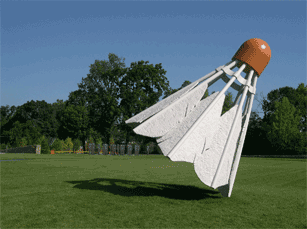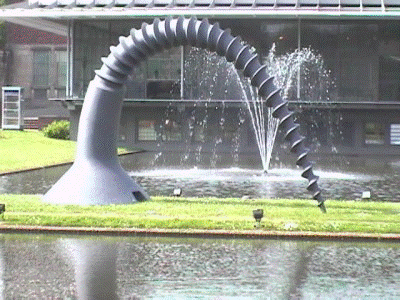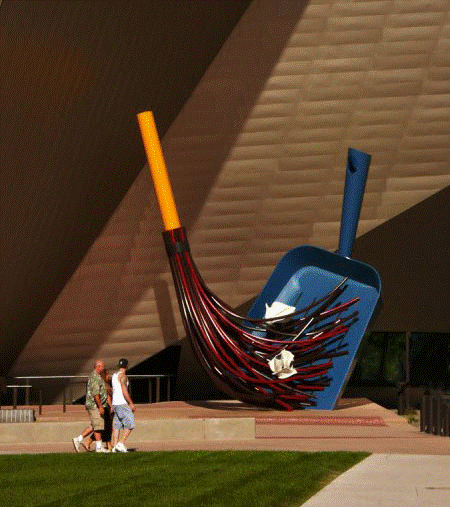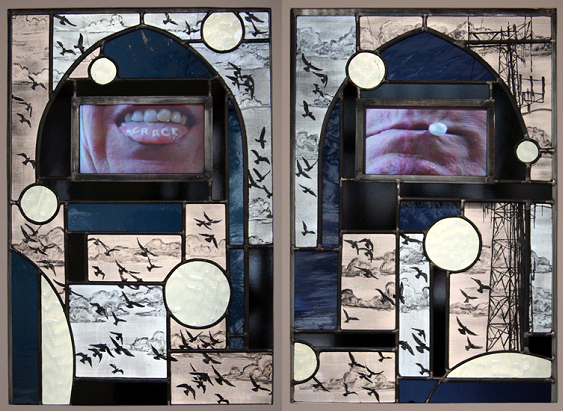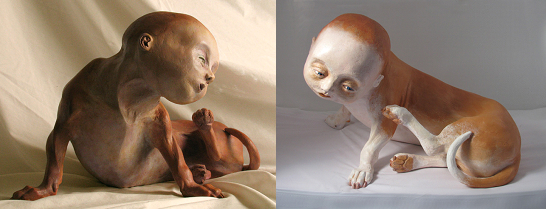Lauren Fensterstock was a critic and a curator before she went to school to get her MFA. Her work really encompasses and discusses the beauty of the world around us today.
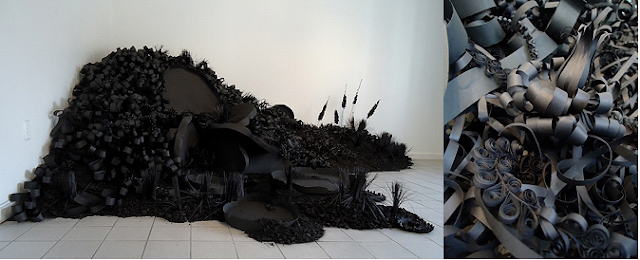 |
| detail |
Mound, 2010
paper, charcoal, plexi
14X12X5 ft.
Installation at Sienna Gallery, Lenox, MA, August - November 2010
This installation piece really speaks to some of the environmental issues going on today. The confrontation of something murky, black, harsh, and evil is combined with the natural world. To me it relates to the oil spill that happened in 2010 that has really affected the coast and beyond. Although paper materials were used, this piece is visually heavy and thick. The black, although it may have been on accident, contrasts well in the white space of the installation. There is an extreme sense of darkness in her recent installation pieces. The details in the piece are clearly essential; they are very curvilinear and organic to even further emphasize the natural characteristics of the piece.
 |
| 1, 5,6,7 |
A Third Nature, 2007
Paper and Charcoal Under Glass
10X10 in.
A Third Nature was done in 2007. Although I am assuming she had 1-7 or more of her pieces, I was only able to find 1, 5, 6, and 7. Here she again uses the black paper under glass; she says herself that she used inspirations from a painter named Claude Lorain: he used a black convex mirror to reflect landscapes. Although this is considered 3-D art, I feel that she wanted to represent these figures as a painting and give an experience to her viewers. She refers often to these pieces as a picturesque gardener; I think that in these black and harsh views of nature there is a sense of decay of the landscape and scenery view the viewer sees. All of the boxes are the same 10X10 size, and when placed in order it almost seems to tell that story of decay. The black and harsh color of these pieces really emphasize that. Every single one is different than the other yet still correlates. Her detail and attention to each curl in the paper makes these pieces very well crafted.
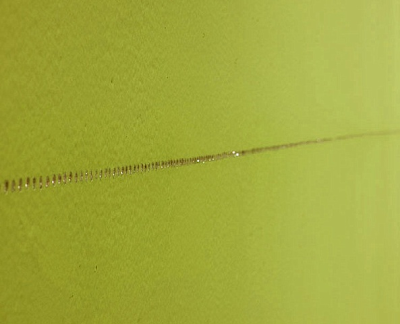
Horizon/Versailles (detail), 2008
inlaid wall instillation
120 linear ft.
Approximately 5000 2mm cubic zironia inlaid into the walls of the Bowdoin College Museum of Art.
If she had just created one small line of these cubic zirconia inlaid into the walls, it would have sent a different message; but she went all out and did about 5000 of them that she individually laid into the walls. This came from her diamond collection in the Bowdoin College Museum of Art. These objects, first seen as diamonds, are something that the viewer longs for and objects of extreme desire. Seeing so many of them would question her motives. Here I am not quite sure what she is trying to say, but all of these little pieces inserted into the wall itself so precisely show the time and care that went into doing this installation; she may be addressing the extreme love and care that women and people have for this insignificant thing in life: diamonds have to be given to show love and more. Culturally these diamond like figures are very important today, and she may have been addressing this.
Diamond Drawing 4, 2005
gouache, wattercolor, charcoal
5X5 in.
I wanted to show this piece of Fensterstock ‘s because of the incredible deception that she has created. Trompe l'oeil is the deception that the viewer feels as if they could reach out and pull that object right off of the 2-D paper. I think her incredible use of the diamonds in her diamond installation pieces was simple but showed incredible talent.
 |
| Continuous Flutter #1-2005, Butterfly Tondo #5-2004, My First Maine Landscape-2004 |
This use of materials is first a little disturbing, but I feel it gives a good purpose to the butterflies. She says that the butterflies she has taken from science that was just going to discard of them. This beautiful creature is given a second chance to show its beauty in these pieces she has created. The colors are interesting and the patterns are unmistakably beautiful.
